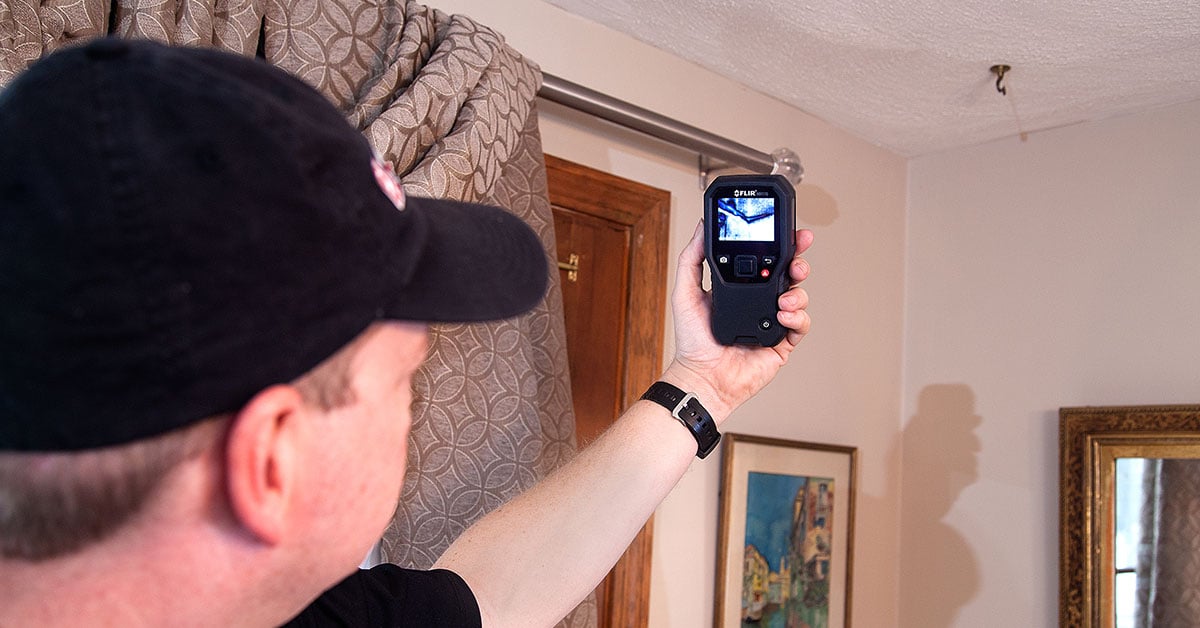Finding Concealed Water Line Leaks: 6 Effective Techniques
Finding Concealed Water Line Leaks: 6 Effective Techniques
Blog Article
Each person has their private conception when it comes to Detecting hidden plumbing leaks.

Early detection of dripping water lines can minimize a prospective catastrophe. Apart from conserving you money, it will decrease the irritation as well as aggravation. The minute you locate a leak, calling your plumber for repairs is the very best service. However, some little water leaks might not show up. Here are some hacks that assist if you can not identify it with your naked eyes.
1. Check Out the Water Meter
Every house has a water meter. Inspecting it is a surefire manner in which assists you discover leaks. For beginners, shut off all the water sources. Ensure nobody will flush, make use of the tap, shower, run the cleaning machine or dishwashing machine. From there, most likely to the meter and watch if it will certainly alter. Considering that nobody is using it, there need to be no motions. That suggests a fast-moving leakage if it relocates. If you identify no modifications, wait an hour or 2 as well as examine back once again. This means you might have a slow-moving leakage that can even be below ground.
2. Inspect Water Consumption
Assess your water expenses as well as track your water intake. As the one paying it, you should notice if there are any disparities. If you detect sudden changes, in spite of your consumption coinciding, it indicates that you have leakages in your plumbing system. Bear in mind, your water costs must fall under the very same range every month. An abrupt spike in your expense indicates a fast-moving leak.
At the same time, a steady boost monthly, despite the very same habits, shows you have a sluggish leakage that's also slowly rising. Call a plumber to extensively check your building, specifically if you really feel a cozy location on your flooring with piping below.
3. Do a Food Coloring Examination
When it comes to water intake, 30% comes from toilets. If the color somehow infiltrates your bowl throughout that time without flushing, there's a leakage in between the tank as well as bowl.
4. Asses Exterior Lines
Do not fail to remember to inspect your exterior water lines also. Examination faucets by affixing a yard tube. Needs to water permeate out of the link, you have a loose rubber gasket. Replace this and guarantee all connections are limited. It will aid get it properly checked out and kept each year if you have actually obtained a lawn sprinkler system. One little leak can squander tons of water and spike your water bill.
5. Check and Analyze the Scenario
Homeowners need to make it a routine to check under the sink counters and also also inside cupboards for any kind of bad odor or mold development. These 2 red flags show a leak so timely focus is called for. Doing regular assessments, even bi-annually, can conserve you from a major problem.
If you understand your home is already old, maintain a careful eye on your heating units, hose pipes, pipes and so on. Look for discolorations and weakening as most pipelines as well as appliances have a life span. They will certainly also normally wear away due to tear and also wear. Don't wait for it to intensify if you think leaking water lines in your plumbing system. Call a specialist plumber right away so you do not wind up with a dreadful mess in your home.
Early discovery of dripping water lines can mitigate a potential disaster. Some little water leakages might not be visible. Checking it is a surefire way that aids you uncover leaks. One tiny leakage can throw away bunches of water and also surge your water bill.
If you believe leaking water lines in your plumbing system, don't wait for it to rise.
WARNING SIGNS OF WATER LEAKAGE BEHIND THE WALL
PERSISTENT MUSTY ODORS
As water slowly drips from a leaky pipe inside the wall, flooring and sheetrock stay damp and develop an odor similar to wet cardboard. It generates a musty smell that can help you find hidden leaks.
MOLD IN UNUSUAL AREAS
Mold usually grows in wet areas like kitchens, baths and laundry rooms. If you spot the stuff on walls or baseboards in other rooms of the house, it’s a good indicator of undetected water leaks.
STAINS THAT GROW
When mold thrives around a leaky pipe, it sometimes takes hold on the inside surface of the affected wall. A growing stain on otherwise clean sheetrock is often your sign of a hidden plumbing problem.
PEELING OR BUBBLING WALLPAPER / PAINT
This clue is easy to miss in rooms that don’t get much use. When you see wallpaper separating along seams or paint bubbling or flaking off the wall, blame sheetrock that stays wet because of an undetected leak.
BUCKLED CEILINGS AND STAINED FLOORS
If ceilings or floors in bathrooms, kitchens or laundry areas develop structural problems, don’t rule out constant damp inside the walls. Wet sheetrock can affect adjacent framing, flooring and ceilings.
https://www.servicemasterbyzaba.com/blog/how-to-detect-water-leakage-in-walls/

As a keen person who reads on Hacks to detect leaks, I was thinking sharing that piece of content was essential. Loved our blog entry? Please share it. Help somebody else find it. Thank-you for going through it.
Quick relief? Dial! Report this page